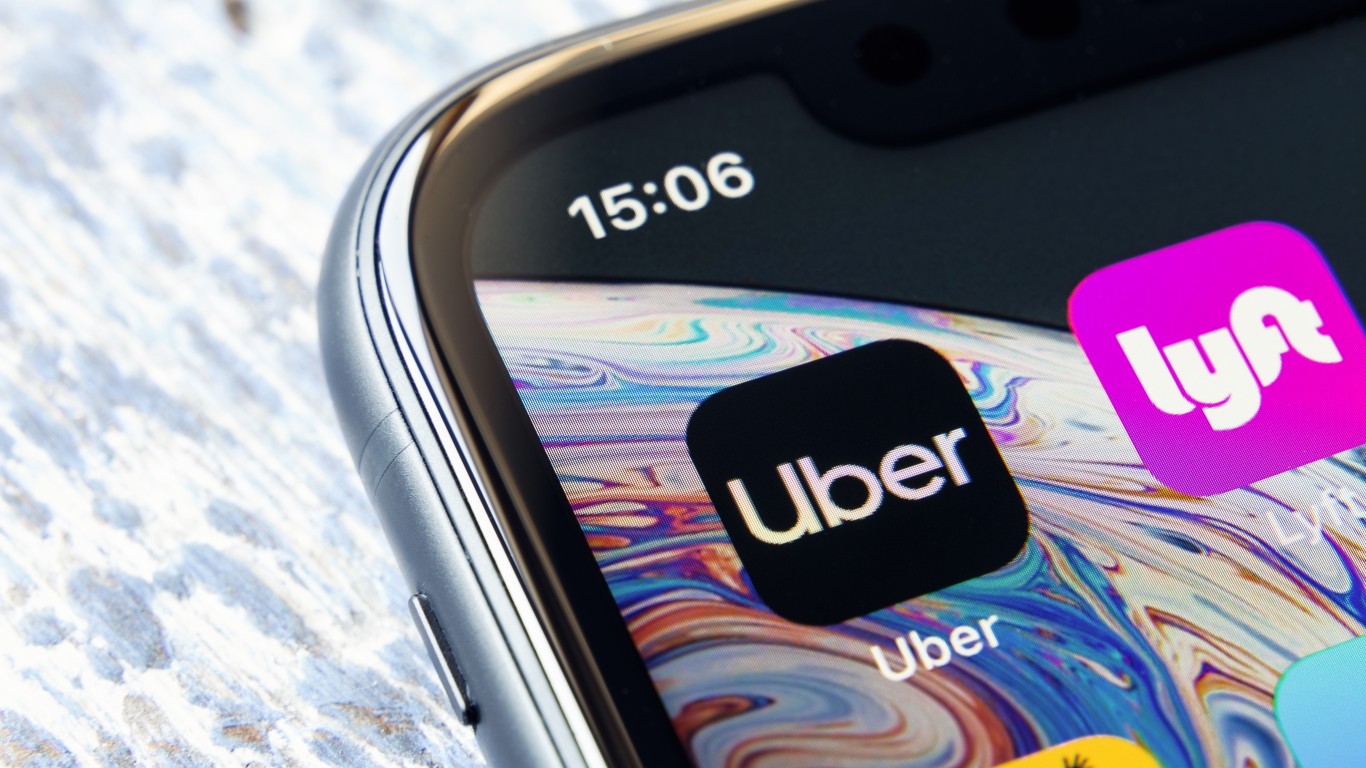
The first half of 2022 was not the worst ever for equities, but it was bad enough. The S&P 500 posted its largest six-month loss since 1970, dropping 20.6%. The Nasdaq fell by 28.6%, its largest first-half loss since 2008, and the Dow Jones industrial average dropped 15.3%, its worst first-half loss since 1962.
[in-text-ad]
Investors have been sticking cash under their mattresses or using it to buy Treasury notes in a not-quite-panicked flight to safety. BofA Global Research’s chief investment strategist Michael Hartnett reported a weekly inflow of $62.6 billion to cash in the past week, $2.4 billion to bonds (largest inflow in 14 weeks), $2.1 billion from gold (largest outflow since March 202) and a weekly outflow of $4.6 billion from equities. Hartnett wrote, “[The] [s]imple truth remains [that] H2 [is] most likely to be one of slowing growth & rising rates.”
He also believes that it is too early to anticipate that the Federal Reserve will begin cutting interest rates again in 2023. Markets are already pricing in rate cuts for next year, and the Fed’s target for core PCE inflation of around 2.6% is aggressive.
Hartnett also comments that the “bigger the outflow, [the] bigger the bounce.” Following the great financial crisis of 2008-2009, returns from the S&P 500 had risen by 28% six months after the March 2009 low point in equity inflows. After 12 months, returns were up 43%.
The trick is finding the equities that are going to do their part to repair investors’ portfolios. The following table shows 10 stocks that have outperformed the S&P 500, on average, in the final six months of a year over the past five years. The table data comes from Wilshire Associates, Investors Business Daily and S&P Global Market Intelligence.
| Company | Ticker | YTD Change | Sector | Avg. 2H Performance |
|---|---|---|---|---|
| Qualcomm | QCOM | −28.8% | Tech | 25.7% |
| Paycom | PAYC | −32.5% | Tech | 23.7% |
| EPAM Systems | EPAM | −55.9% | Tech | 23.3% |
| Sherwin-Williams | SHW | −36.4% | Materials | 19.4% |
| Costco | COST | −15.7% | Cons Staples | 18.6% |
| Intuitive Surgical | ISRG | −44.2% | Healthcare | 18.1% |
| NextEra Energy | NEE | −17.0% | Utilities | 17.9% |
| Dover | DOV | −33.2% | Industrials | 17.8% |
| Amphenol | APH | −26.4% | Tech | 17.8% |
| Alphabet | GOOGL | −22.9% | Comm Svcs | 14.4% |
There are four tech stocks on the list, perhaps no surprise given how badly beaten up the sector was in the first half of the year. The other six stocks on the list all came from different sectors.
Here are a few comments and interesting numbers on each of the 10.
Qualcomm
Qualcomm Inc. (NASDAQ: QCOM) got a bit of a boost last week after Apple’s efforts to build the iPhone maker’s own modem chip reportedly ended in failure. Qualcomm will continue to supply the chips through next year.
Qualcomm’s free cash flow over the past 12 months was $7.2 billion, and its expected dividend yield over the next year is pegged at 2.3%. The average price target on the stock is about $194, implying a potential share price gain of about 45.4%. Qualcomm’s payout ratio for the past year was 27.5% and the total shareholder return was negative 1.7%.
[in-text-ad]
Paycom Software
Paycom Software Inc. (NYSE: PAYC) competes with giants like SAP, ADP and Oracle in human resources management, and its cloud-based software-as-a-service model has added about 390% to the share price over the past five years.
Free cash flow over the past 12 months totaled $217.3 million ($3.89 per share), but Paycom does not pay a dividend. The average price target on the stock is $378, implying an upside potential of about 14.8% to a recent price of around $329.20. The stock’s total return over the past year was negative 13.9%.
EPAM Systems
This one already has begun to work its way out of the hole it found itself in following the Russian Invasion of Ukraine. Bank of America Securities included EPAM Systems Inc. (NYSE: EPAM) among its top 10 picks for the third quarter of this year.
EPAM’s free cash flow for the past 12 months totaled $384.1 million ($6.72 per share), and the company does not pay a dividend. The average price target on the stock is around $418, implying an upside potential of about 27.6% to a recent price of around $327.30. The stock’s total return over the past year was negative 36.5%.
Sherwin-Williams
Sherwin-Williams Co. (NYSE: SHW) has struggled with supply chain issues over the past few quarters and the share price has dropped enough that it may be near an attractive entry point.
The company’s free cash flow over the past 12 months was $1.7 billion, and its expected dividend yield over the next year is pegged at 1.04%. The average price target on the stock is about $297, implying a potential share price gain of about 24.6%. The Sherwin-Williams payout ratio for the past year was 32.1%, and the total shareholder return was negative 12.1%.
Costco
For the first time in five years, Costco Wholesale Corp. (NASDAQ: COST) is considering raising its membership rates. The broadlines retailer posted an all-time high worldwide membership renewal rate of 90% at the end of its May quarter, and historically it hikes its membership rates every 5.5 years.
The company’s free cash flow over the past 12 months was $4.1 billion, and its expected dividend yield over the next year is pegged at 0.67%. The average price target on the stock is about $556, implying a potential share price gain of just over 10%. Costco’s payout ratio for the past year was 24.8%, and the total shareholder return was 24.8%.
Intuitive Surgical
Intuitive Surgical Inc. (NASDAQ: ISRG) has surpassed analysts’ profit and revenue estimates for 12 consecutive quarters. Even so, it was the second-worst performing stock on this list.
Intuitive Surgical’s free cash flow over the past 12 months was $1.44 billion ($4.03 per share), and the company does not pay a dividend. The average price target on the stock is around $305, implying an upside potential of about 45% to a recent price of around $210.30. The stock’s total return over the past year was negative 33.7%.
[in-text-ad]
NextEra Energy
This giant utility is the world’s largest producer of electricity using solar and wind energy. NextEra Energy Inc. (NYSE: NEE) also is wading into the regulated water and wastewater business, taking on entrenched companies like American Water Works and Essential Utilities.
The company’s free cash flow over the past 12 months was negative $8.2 billion, and its expected dividend yield over the next year is pegged at 1.98%. The average price target on the stock is about $90, implying a potential share price gain of nearly 13%. NextEra’s payout ratio for the past year was 213.3%, and the total shareholder return was 8.8%.
Dover
Dover Corp. (NYSE: DOV) has raised its dividend payment for 66 consecutive years, second only to American States Water, on the list of Dividend Kings that have raised dividend payments for at least 50 consecutive years.
The company’s free cash flow over the past 12 months was $771.8 million, and its expected dividend yield over the next year is pegged at 1.65%. The average price target on the stock is about $168, implying a potential share price gain of about 36.4%. Dover’s payout ratio for the past year was 25.8%, and the total shareholder return was negative 17.6%.
Amphenol
This designer, maker and seller of a variety of electrical, electronic and fiber optic connectors has a market cap of about $39.5 billion, and Amphenol Corp. (NYSE: APH) has been in business for 90 years.
The company’s free cash flow over the past 12 months was $1.21 billion, and its expected dividend yield over the next year is pegged at 2.03%. The average price target on the stock is around $84, implying a potential share price gain of about 26.6%. Amphenol’s payout ratio for the past year was 22.5%, and the total shareholder return was negative 3.4%.
Alphabet
Alphabet Inc. (NASDAQ: GOOGL) plans a 20-for-1 stock split for July 18. The company’s shareholders will receive a one-time dividend of 19 shares of stock for each share of Google stock they currently own.
Google’s free cash flow over the past 12 months was $69 billion, and the company does not pay a regular dividend. The average pre-split price target on the stock is around $3,158, implying a potential share price gain of about 32.4%. Google’s total shareholder return over the past year was negative 4.7%.
Travel Cards Are Getting Too Good To Ignore (sponsored)
Credit card companies are pulling out all the stops, with the issuers are offering insane travel rewards and perks.
We’re talking huge sign-up bonuses, points on every purchase, and benefits like lounge access, travel credits, and free hotel nights. For travelers, these rewards can add up to thousands of dollars in flights, upgrades, and luxury experiences every year.
It’s like getting paid to travel — and it’s available to qualified borrowers who know where to look.
We’ve rounded up some of the best travel credit cards on the market. Click here to see the list. Don’t miss these offers — they won’t be this good forever.
Thank you for reading! Have some feedback for us?
Contact the 24/7 Wall St. editorial team.

 24/7 Wall St.
24/7 Wall St. 24/7 Wall St.
24/7 Wall St.



